
Perhaps the most disturbing symptoms of toxic mold exposure occur when our cognitive functions are compromised, and we lose control of our “normal self”. These unexplained symptoms provide a glimpse of being debilitated to the degree that we cannot function. This could handicap our ability to work or even our ability to enjoy and care for our loved ones. When we do not know the cause, we go to the doctor. There is always the underlying fear of some significant chronic illness like Parkinson’s, dementia, or even Alzheimer’s.
Unfortunately, neurological symptoms or anything that impacts our function, poor sleep, balance, pain, memory, energy, and even mood are often met with mystery by physicians. The human brain is the most complicated and least understood organ. Traditional western medicine usually addresses these symptoms by either prescribing medications to address depression, migraines, knock out the pain, or referring patients to a neurologist, psychiatrist, rheumatologist, or a combination of both. This is not the fault of the physicians or diagnosticians. They collect the facts and follow their trained treatment hierarchy. Unfortunately, catch-all diagnosis become the focal point for primary care providers to provide at least some explanation. Many mold sufferers are diagnosed with chronic fatigue syndrome, fibromyalgia, Epstein Barr Virus, ect.
Possible Neurological Symptoms from Mycotoxins (neurotoxins):
- Headache: Sometimes perceived as a direct extension from an existing sinus infection that has been diagnosed or migraine headaches
- Brain fog: Inability to clearly concentrate or confusion
- Memory issues: Short term memory lapses that are noticeable. Examples can include forgetting directions to where you are driving or finding yourself lost in a task you are doing.
- Vertigo: Distorted balance. Permanent dizziness is a feeling of spinning, you may feel tilted yourself or you may feel that the world is swaying, which causes an unbalanced sensation that you are being pulled in one direction.
- Tinnitus: the illusory perception of a constant ringing in your ears
- Motor dysfunction: tremors, inability to control extremities normally
- Pain: continuous and episodic without explanation
Physician Response To Neurological Symptoms
Once your primary care physician decides what they believe is the problem, they will normally respond in two ways. If it is headaches, they will likely attempt to treat with anti-migraine medications and possibly pain medications to “knock it out”. When it is not readily explained, antidepressants are often prescribed, or the patient is referred to a specialist. Antidepressants may help as depression diagnosis is a symptom of unexplained pain. The next stop is a psychiatrist or neurologist.
When going to the psychiatrist with physical symptoms, there is a process of trial and error with therapy to identify issues along with several versions of psychopharmacological medications. This can take months. A visit to a specialist begins with several expensive diagnostics (MRI, etc.) for imaging to determine whether they can see an issue. Depending on the symptoms, it is common for them to prescribe anticonvulsive medicines for pain.
A very common theme I have heard from patients is that they do not believe the physician is listening to them or believe them. This is most common when there are other’s in your environment who do not have the same symptoms. Sarah Hyland from the TV show Modern Family explains how she felt.
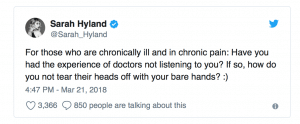
Identifying the Environmental Facts of Neurological Symptoms
Physicians are not trained to pursue lines of questioning regarding the environment or how to treat environmental illness. In most cases, physicians see several patients per hour and this line of questioning takes too much time. It is in these question that the mystery can become obvious.
Almost 50% of homes have had some form of water damage. There are several reasons why this line of questioning is critical. Several common indoor molds reproduce when water damages building furnishings to a significant degree (soaking). These common indoor molds (Aspergillus, Penicillium, Stachybotrys) produce mycotoxins. These mycotoxins are metabolites that are sticky neurotoxins that can attach to dust and be inhaled. You can take a free questionnaire that addresses mold sensitivity Here.
Cause and Effect
Once mold or mycotoxins are inhaled, they can settle in your sinuses. The sinuses are dark, warm, and moist. Mold triggers an immune system response that triggers mucous production. Mucous becomes food for mold, enabling it to reproduce and cause a fungal infection of the sinusitis. This creates an environment conducive to bacterial infections. The result is chronic sinusitis, the most common of chronic illnesses in the US.
However, mycotoxins can be inhaled and cause harm without a sinus infection being present. The inhaled mycotoxins can settle in the sinuses. Realistically, these potent neurotoxins are microns away from the brain and blood brain barrier. These toxins can cause neurological symptoms. While there are urine tests to determine if there are mycotoxins, the results are not completely conclusive. More important, these tests are likely to find mycotoxins that are metabolized by the body’s organ systems. Mycotoxins that may have been ingested and go through the digestive tract, liver, and excretion path.
The brain has a different method of metabolizing toxins; the glymphatic system. In 2012, researchers from the University of Rochester identified this new maintenance system called the glymphatic system, which uses the cells’ mitochondria to remove cellular waste from the brain. It found that the clear cerebrospinal fluid (CSF) in the brain is what is responsible for draining toxins from the brain, similar to how the lymphatic system is what removes waste from other cells in our bodies to the kidney and liver. But, the brain has no lymph –CSF performs this activity instead.
Sleep is Essential
The glymphatic system clears waste most effectively during slow wave sleep. Sleep plays a crucial role in our brain’s physiological maintenance. As we sleep, the brain is active clearing out toxins accumulated over the course of the day. The lymphatic system was named for its role in draining toxins from our bodies. The “GL” is a nod to the glymphatic systems on glial cells, the supportive cells in the brain that work largely to maintain homeostasis and protect neurons. Scientific research has noted the dramatic decrease of clearance in compounds causing degeneration during prolonged wakefulness.
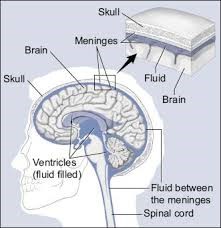
“Taking Mold off The Table”
This quote comes from Dr. Donald Dennis, and ENT who specializes in mold and mycotoxin treatment. His concept is practical and elegant in its simplicity. When a patient (with Neurological Symptoms) comes to his office for the first time, he uses mold screening test plates to test the clothes for mold and a lab determines the species. He also takes a nose swab as well. If there is significant mold on the clothes, it likely came from their home. He follows up with asking patients to test their homes for mold using Mold Screening Test Kits. He then takes a blood sample to test for antibodies to allergens and mold. This is called an immunoglobulin test. Finally, patients take a questionnaire about their environment. You can access that Here. He uses the results to focus questioning during medical history to determine if the environment may be a factor.
The combination of this line of investigation can identify if mold or mycotoxins are the potential problem. A patient can then address their home environment to ensure they have good indoor air quality. “The quality of the AIR you breathe in is 5 TIMES MORE IMPORTANT than all the treatment rendered by hospitals, doctors and medications!” (Dr. Rishi Manchanda, 2014. Ted Talk, “What makes you sick?”) The primary way your body removes toxins from the body is through its remarkable healing and detoxification processes. However, healing is nearly impossible when you are breathing in toxins and mold continuously. Creating a mold free environment at home is the ticket to letting your body remove what is making you sick. Rest, diet, and sleep help you heal.
By taking mold off the table, it is possible to avoid months or years of expensive diagnostics, suffering, medications, and personal problems that result from the illness. You can even pay for the products with your HSA if your physician will write a detailed prescription for the steps to maintain good home and body mold hygiene to get well.
Patients With Neurological Symptoms Can Take Action
Testing and cleaning the home for mold is an important first step. Rinsing the sinuses with a nasal wash system and Citridrops twice a day is the single most important thing you can do to help your body heal. It is analogous to cleaning and changing dressing on a wound. It prevents accumulation, infection, and promotes healing. Finally, fogging the home with EC3 mold concentrate is the most effective way to reduce mold and mycotoxin levels in your home to minimal levels.
These steps will definitely help with symptom relief (even if you have a water damaged home); however, they do not replace the need for professional mold remediation or physician’s care to treat illness or aid in the optimal detoxification management.
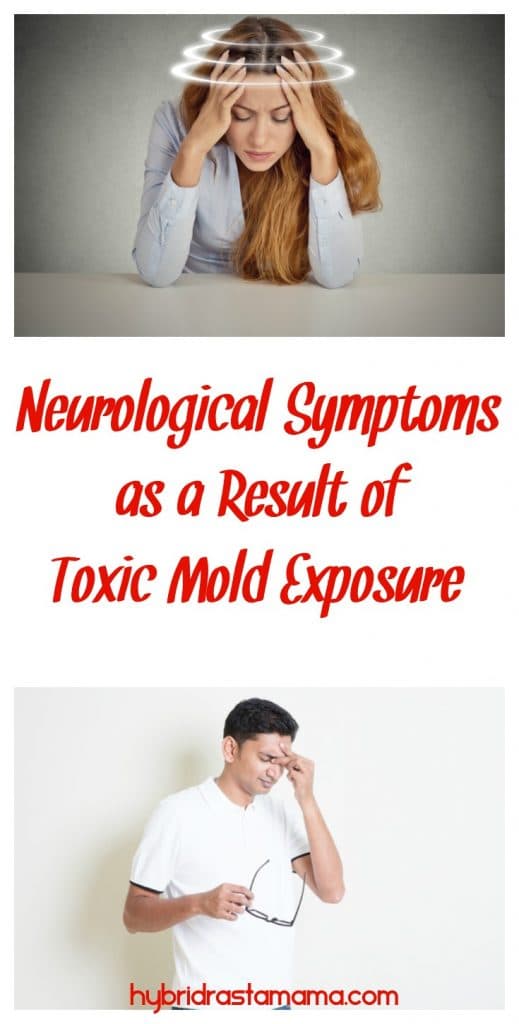
Sources for mold related information include but are not limited to:

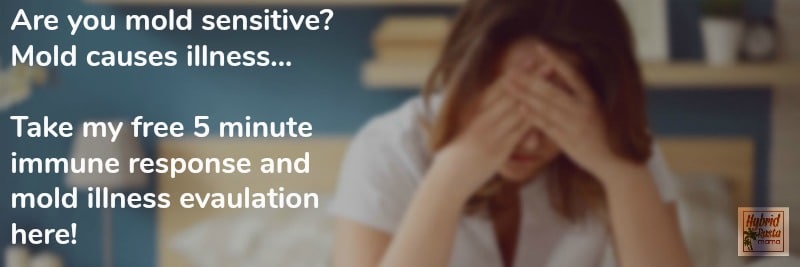



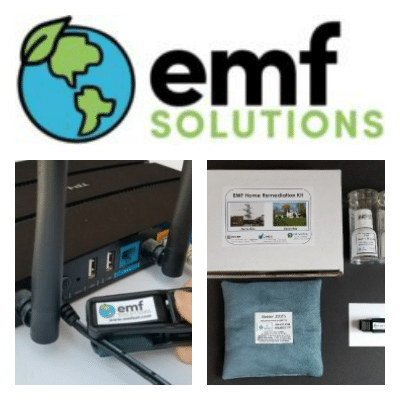


Sandra cataldo says
What about coffee. I tried the bulletproof coffee but read the FDA regulates all coffees in regard to mild content so back to black Duncan’s Donjts coffee. What about regular nature made supplements? I’m buying Pure brand GI detox. Getting hydrocolonic today. Can’t seem to sweat like I should. 5 month after moving still having dizziness, head tilting sensations and vertigo, extreme bouts of muscle weakness. Trouble with the coal making me feel tire. The albuterol nebulozer seems to help me sleep better? Post exercise malaise for 3days. Doing the hydro massage table and massage chairs at Planet Fitness. Use Austin air. Put on Pure liposomal gltathine, and told to get phoshadital choline turmeric gidetox pro omega 1000, epsom salt baths 10 mins, and to follow the whole30.com diet. Wish I felt better already!
Jennifer says
Hi Sandra! I’m sorry to hear that you are still struggling. Honestly, detoxing from mold is a long journey. Little re-exposures at stores and whatnot can set you back until your system is stronger. Sometimes you can actually do too much detoxing in one day which makes you feel worse. Is you gym mold free?
The FDA does regulate mold content in all foods however, they don’t regulate mycotoxins. The mycotoxins are what get you health wise. Bulletproof coffee is mycotoxin free. So is this company: http://www.us.foursigmatic.com/#_a_RASTAMAMA You might want to reconsider your coffee.
Are you under the care of a practitioner? I feel like the supplements you are on could be revised a bit.